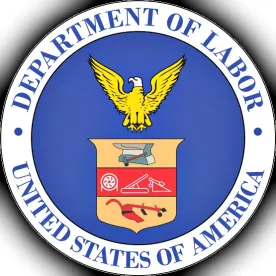The problem of “missing” participants and beneficiaries (individuals for whom the plan administrator does not have adequate contact information) is an ongoing issue for retirement plan administrators. It is also an area to which the DOL has dedicated significant attention in recent years, particularly in its enforcement actions, which has been a challenge for administrators. While there are general requirements under ERISA to maintain adequate plan records and distribute materials to participants and beneficiaries, there has been little in the way of specific DOL guidance regarding missing participants outside the context of plan terminations. However, on January 12, 2021, the Employee Benefits Security Administration’s (EBSA) issued two pieces of helpful guidance, (i) outlining best practices for dealing with missing participants and (ii) explaining EBSA’s processes with respect to its Terminated Vested Participants Project (TVPP) audit program. The DOL also issued Field Assistance Bulletin 2021-01 on the use of the PBGC Missing Participant Program by terminating defined contribution plans, which is addressed in a separate blog post.
Best Practices for Preventing and Locating Missing Participants
EBSA outlined best practices that it has found “effective at minimizing and mitigating the problem of missing or nonresponsive participants,” summarized below. These are applicable to both defined benefit and defined contribution plans. All of these practices may not be appropriate for each plan, but plan administrators should review and determine how best to supplement their existing practices. As discussed below, if audited a plan will be well-served if the plan administrator can point to the documented implementation of many of these best practices.
-
Maintain accurate participant census data.
-
Contact participants (current and former) and beneficiaries periodically to confirm or update contact information.
-
Include reminders in various communications about updating contact information.
-
Allow participants to update information online and include prompts to confirm information upon log in to the plan’s online platform.
-
Regularly request updates of beneficiary contact information.
-
Flag and follow up on undeliverable mail or email and uncashed checks.
-
Perform regular audits and correct any errors detected.
-
Take steps to ensure the appropriate transfer of information and to perform searches and corrections upon a change in record-keeper, merger or acquisition.
-
-
Communicate effectively.
-
Use plain language and offer language assistance where appropriate.
-
Clearly and prominently identify the subject matter.
-
Encourage use of plan websites and toll free numbers.
-
Build processes into onboarding, enrollment and exit procedures to update or confirm information, and to inform employees of the importance of ensuring information remains updated.
-
Clearly mark envelopes and correspondence with predecessor plan or plan sponsor names for participants who terminated before the change (for example, after a corporate merger or change in plan name).
-
Communicate about how the plan can help eligible participants consolidate accounts from prior employers or IRAs.
-
-
Perform missing participant searches.
-
Check related plan and employer records for information about the participant, beneficiary or, if needed the next of kin or emergency contact.*
-
Check with designated beneficiaries and/or employee emergency contacts on record.*
-
Use free online search engines, public record databases (e.g., for licenses, mortgages and real estate taxes), obituaries and social media.
-
Use commercial locator services, credit-reporting agencies or proprietary internet search tools to locate individuals.
-
Use USPS certified mail or a private delivery service with similar tracking feature to send mail to the last known mailing address.
-
Attempt contact through other means of communication (e.g., e-mail, phone, text, and social media).
-
Use death searches in the case of extended unresponsiveness (e.g., Social Security Death index) and, if death is confirmed, redirect communications to beneficiaries.
-
Reach out to colleagues of missing participants – for example by checking those who worked in the same office or by publishing missing participant lists on the intranet, in e-mails to remaining employees, or in communications with other retirees (for collectively bargained employees consider reaching out to union local office and having missing participant lists included in member communications).
-
Register missing participant on public and private pension registries with appropriate privacy and cyber security protections, and publicize registry through e-mails, newsletters, and other communications to existing employees, union members and retirees.
-
* If some of these steps create privacy concerns, the plan may request that the related plan or employer forward a letter from the plan to the missing participant or beneficiary on its behalf.
-
Document procedures and actions taken.
-
Keep and follow clear, written polies and procedures.
-
Document key decisions and actions taken to implement and comply with these policies and procedures.
-
Monitor use of third party record-keepers and work with them to identify and correct recordkeeping or communication issues (including procedures for pulling in relevant information held at the employer level).
-
EBSA’s TVPP Audit Program
The other piece of guidance released by EBSA on missing participants relates to its Terminated Vested Participants Project (TVPP) audit program, which focuses on identifying defined benefit plans with signs that there may be significant issues in identifying missing participants or beneficiaries and paying benefits at normal retirement age or when required minimum distributions (RMDs) are required to commence.
While each audit will be case-specific, EBSA will request and review a variety of plan documents, policies and census records, and will generally look for:
-
Systematic recordkeeping and administrative errors that create a risk of loss because benefits do not start before death of the participant or beneficiary, or because of excise taxes on RMDs.
-
Inadequate procedures for identifying and locating missing participants and beneficiaries, or for contacting terminated vested participants or beneficiaries shortly in advance of normal retirement age or when RMDs are required to commence.
-
Inadequate procedures for addressing uncashed distribution checks.
EBSA also identified a number “red flags” that come up during audits, including:
-
Missing and incomplete data in census records (including use of placeholders or clearly flawed data).
-
Uncashed checks or returned mail.
-
A significant number of terminated vested participants who are eligible for, but have not claimed, benefits (e.g., individuals over normal retirement or RMD age).
-
Continuing to send communications to bad addresses without taking steps to verify the correct address or using resources like missing participant services offered by existing service providers, the USPS Address Correction Service or the National Change of Address database.
-
Benefit statements that do not clearly advise of the participant’s vested status, the date at which they are eligible to start receiving benefits, or excise tax consequences of delaying commencement beyond the RMD requirements.
-
Confusing or unclear communications, for example those not in “plain English,” or that fail to include predecessor employer or predecessor plan names (e.g., after mergers or acquisitions).
If a plan is audited under the TVPP audit program, after EBSA receives and reviews the requested information, it will contact the plan fiduciaries to discuss potential remedies to the identified problems. The agency has indicated that it will enter into a dialogue and give plans a reasonable amount of time to address and respond to identified areas of concern. If EBSA determines that the remedies are adequate, EBSA will generally recite the corrective steps as part of its closing letter. Absent widespread fiduciary breaches, EBSA has indicated that audits generally may be closed without citing individual plan fiduciaries for specific violations.
Proskauer Perspective.
The DOL has long been concerned with the issues surrounding missing participants and beneficiaries. Plan administrators should review plan data and procedures, and discuss with their advisors whether to make any changes to their existing procedures and practices. In considering these policies and procedures, administrators and sponsors should also be aware of EBSA’s TVPP audit program, as it provides a helpful understanding of what the DOL will be reviewing on audit.



 />i
/>i

